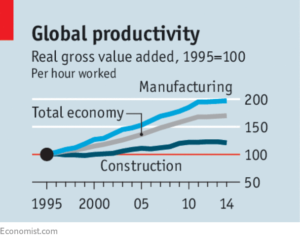
As Canadians and Americans have continued to recover from the great recession of 2008, housing costs have risen sharply across the continent with sustained economic expansion over the last 10 years. Extreme housing shortages and subsequent costs have been particularly elevated in urban centers up and down the west coast of the continent in cities like Vancouver, Seattle, San Francisco and Los Angeles. Let’s explore a few forces that have contributed to the cost of housing in these markets.
Land Costs
On average land cost accounts for 5%-10% of development costs; however, this is greater in coastal cities with limited supply of land available for development. Policy makers are now starting to realize that single family zoned neighborhoods are a very inefficient use of land and are working on solutions like transit based density zones to address this.
Material Costs
Recent changes in U.S. trade policy have generated increased attention to raw materials costs. The Association of General Contractors (AGC) published data indicating the costs of materials used in construction increased 7.4% over the past year. Further price escalations are expected as tariff uncertainty continues.
Labor Costs
Shortages of skilled labour have increased competition for a limited number of workers, which has driven up labour costs and delay risk in projects which creates additional expense. Since 2006, the number of construction workers is down 23%. This is the greatest challenge the construction industry faces today.
Productivity
The global construction productivity rate has lagged behind other sectors for decades. Construction productivity has been relatively flat dating back to 1945. By comparison, other sectors such as manufacturing, agriculture and retail have seen productivity rates surge by as much as 1500%.

Regulatory Burden
Permitting timelines can be a real cost driver in the development process. The National Association of Homebuilders (NAHB) found that regulations imposed by all levels of government account for an average of 32.1% of total development costs. Greater efficiency in the zoning and permit approvals process could yield significant savings that can be passed on to the end user.
These are the challenges the construction industry faces in today’s environment. In our next article we will outline ways in which the modular construction approach is solving many of these challenges to increasing housing supply at an affordable and sustainable rate.
